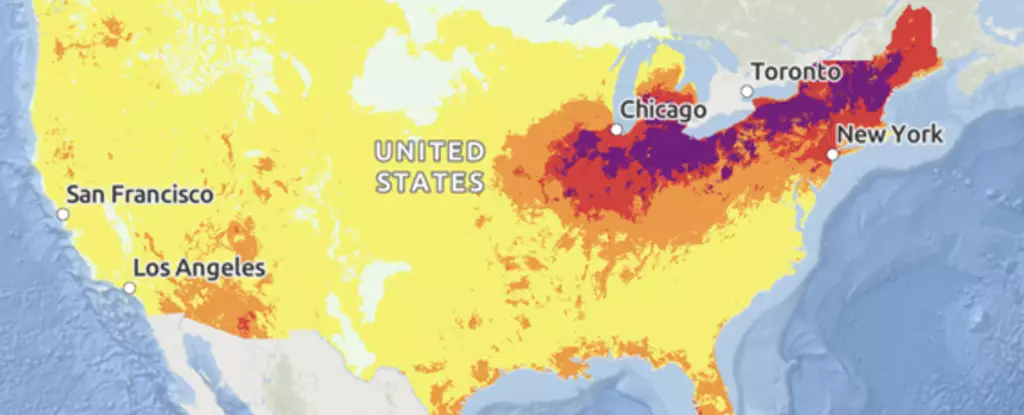As we gear up for the summer season, over 260 million individuals are bracing themselves for challenging temperatures across the northeastern US. The National Weather Service (NWS) is issuing warnings as the first significant heatwave of the summer is expected to shatter records in various states. The heat dome, a phenomenon where high pressure atmospheric systems trap warm air beneath them, is predicted to move eastward from the Great Lakes towards New England. Temperatures are projected to soar up to 41°C (105°F) during the day, with minimal relief overnight as temperatures hover in the mid 20s°C (70s°F).
What sets this particular heatwave apart is its early arrival in the season and the potential for an extended duration. The combination of intense heat, prolonged sunshine, and limited overnight relief may lead to drought conditions in certain areas. Urban centers in states like New York, Massachusetts, and Pennsylvania face heightened risks due to the heat island effect, where materials used in construction retain heat, exacerbating temperatures. The vulnerable populations, including children, the elderly, and pregnant individuals, are urged to stay indoors, stay hydrated, and take breaks to prevent heat-related illnesses.
It is crucial to be aware of the signs of heat stress, which can manifest as lethargy and confusion. Checking in on loved ones, especially those at higher risk, is essential during extreme heat events. Additionally, it is advised not to leave vulnerable individuals or pets in parked vehicles, as temperatures can rapidly escalate to dangerous levels. Greg Brooks, a safety director, emphasizes the importance of recognizing heat exhaustion symptoms, as people may not always realize they are experiencing heat-related illnesses.
Heatwaves like the one approaching the northeastern US are symptomatic of worsening human-induced climate change. The rising number of heat-related deaths in the country underscores the critical need to address the impact of climate change on extreme weather events. As temperatures continue to rise, heatwaves are becoming more frequent, intense, and prolonged, leading to increased fire dangers as well. It is imperative to take the threat of extreme heat seriously and make necessary preparations to mitigate its effects.
With the summer season upon us, it is essential to stay informed, take precautions, and prioritize safety during heatwaves. By understanding the risks associated with rising temperatures, recognizing the signs of heat-related illnesses, and taking steps to protect ourselves and others, we can navigate through extreme heat events more effectively. As we face the challenges of climate change, it is crucial to adapt to changing weather patterns and work towards building resilience in the face of escalating temperatures. Stay safe, stay cool, and stay vigilant during this upcoming heatwave season.


Leave a Reply